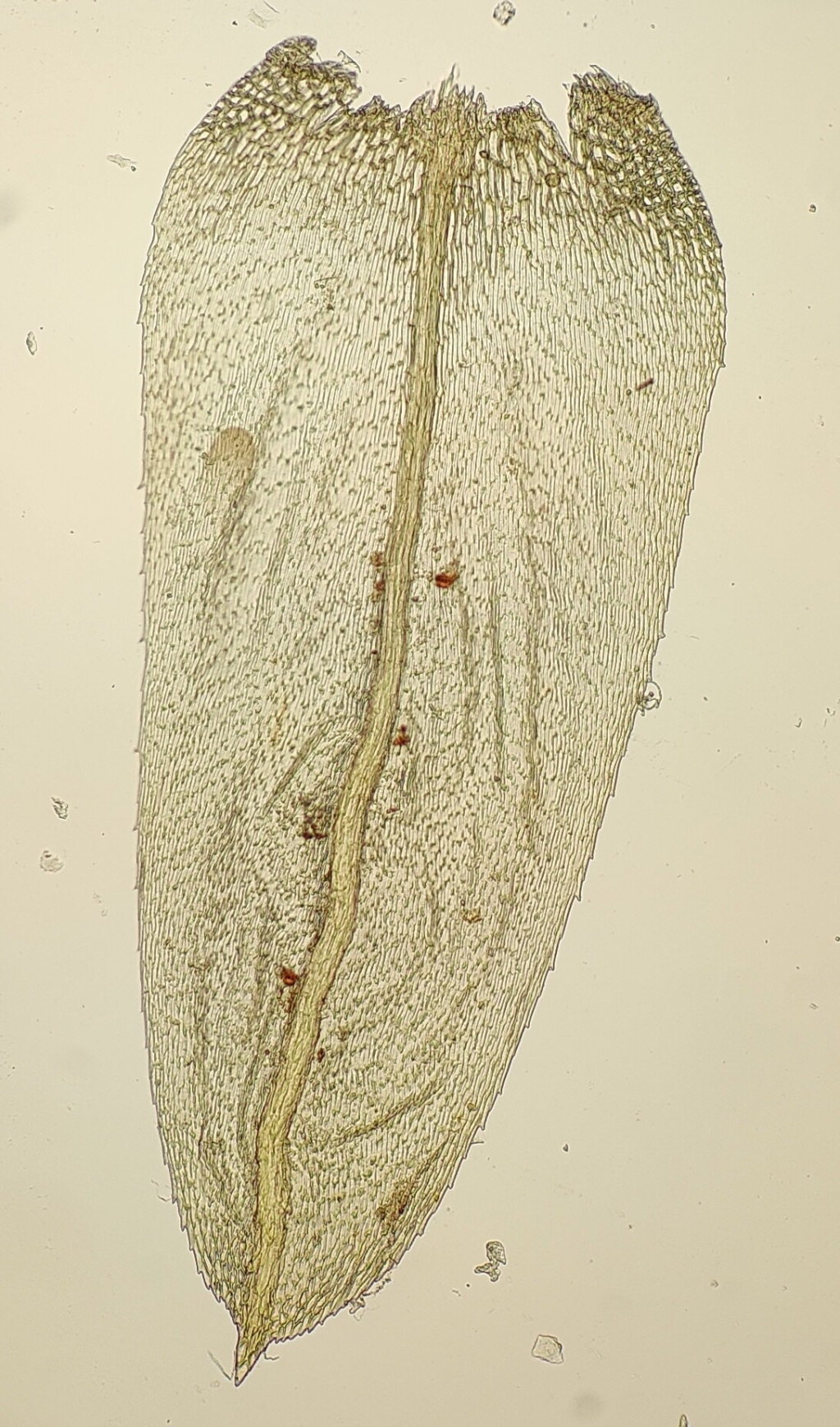Braithwaitea sulcata
(Hook.) A.JaegerStems projecting horizontally from tree trunks, branches and occasionally rocks. Stipes to 6.5 (–8) cm long, without leaves near base, black. Fronds ovate-oblong, to 8 (–11) cm long, pinnately to bipinnately branched. Stipe leaves triangular- to ovate-oblong, 2.5–4.5 mm long, 1–1.8 mm wide, concave; apices acute to gradually long-acuminate; costae distinct to very faint, percurrent to shortly excurrent; margins remotely and minutely crenulated to serrulate, plane; cells linear, 45–115 μm long, 3.5–6 μm wide, smooth to weakly prorate; alar cells quadrate to rectangular, forming a small elongate group. Branch leaves erecto-patent when moist, imbricate and often irregularly longitudinally undulate when dry, ovate to ovate-oblong, 1.5–2 mm long, 0.6–0.9 mm wide, concave; apices somewhat obtuse to truncate or emarginate; costae strong, excurrent as a short, often recurved mucro; margins serrate to dentate near apex, recurved at apex; cells linear, 25–80 μm long, 4.5–5 μm wide, smooth to weakly prorate. Setae (7–) 10–15 (–18) mm long, orange to pale brownish, reddish or dark brown, smooth. Capsules erect or suberect, cylindric, straight or almost so, striate to angular or deeply sulcate, occasionally almost smooth, (3–) 3.5–5 (–5.5) mm long. Opercula conic, with a blunt apex, c. 0.9–2 mm long.
New Zealand and New Caledonia. Recorded in Victoria over 100 years ago from the Dandenongs, Tarwin and the Upper Ovens River.
Sporophytes are regularly observed among Australian populations, whereas they appear to be very rare elsewhere (Touw 1971, 2012). In New Zealand reproduction appears to be primarily by gemmae that seem to be very rare among Australian populations (Touw 1971, 2012). Male plants appear to be rare throughout the distribution (Touw 1971).
 Spinning
SpinningTouw, A. (1971). A taxonomic revision of the Hypnodendraceae (Musci). Blumea 19: 211–354.
Touw, A. (2012). Australian Mosses Online. 21. Braithwaiteaceae. http://www.anbg.gov.au/abrs/Mosses_online/Braithwaiteaceae.pdf.

